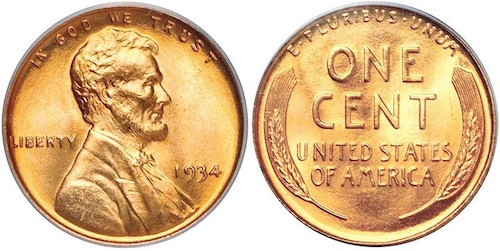
US cent
The concept of the US cent was introduced by Thomas Jefferson, who was disgusted with the English system of units, with quantities such as quarts, gallons, bushel, feet, and inches. The English money system was as convoluted as the other measurements. A pound sterling was divided into four crowns. A crown divided into five shillings, a shilling into five pennies, and a penny divided into four farthings. In Jefferson’s system, the fundamental unit was taken as the Spanish collar, which circulated throughout the United States at the time. This dollar was to be divided into 10 dimes, which could each be divided into ten cents, which could each be divided into ten mills.
A Cent is not a penny!
As you can read, a penny and a cent are two fundamentally different monetary units. In America, we use cents, not pennies, although I recognize that even the United States mint labels rolls of cents as “pennies.”
Types of US cents
My discussion of cents is divided into the following:
Large cents (minted from 1793 to 1856), with a more detailed discussion of the highly unpopular chain cent of 1793.
In 1856 the small cent was introduced. I have discussion on the Indian Head cent, minted from 1859 to 1909) and the Lincoln cent, which began in 1909. The Lincoln cent discussion is divided into a discussion of wheat cents (1909 to 1959), memorial cents (1959 to 2008), including the scarce cents with different spacing of letters (wide AM vs. close AM), the commemorative reverse Lincoln cents of 2009, and finally the Lincoln shield cents, which began in 2010.
The future of the cent
Due to inflation, the cent has lost so much of its value that it may not stick around much longer. Collect them while you can.